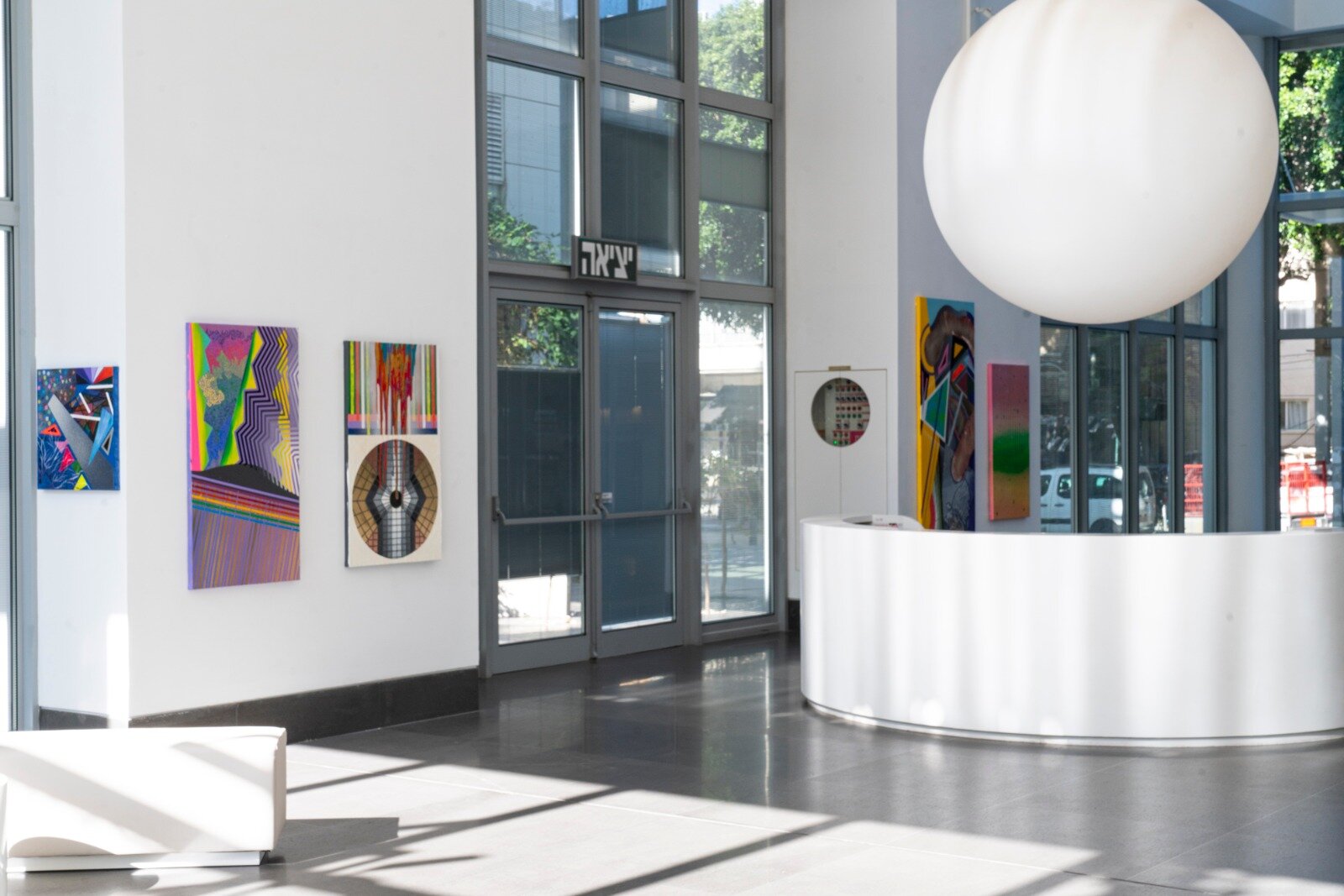Movements in Color: Solo Exhibition by Gal Yerushalmi
January-March 2021, Frishman 46 Art Space, Tel Aviv
Installation photos by Gal Yerushalmi
Gal Yerushalmi is preoccupied with the dynamics taking place within the painting not only in space but also in time. Judging by the experiential and energetic nature of his forms, it does not come as a surprise that Yerushalmi used to be a professional dancer. The crossing from dance – an art form that typically dictates a viewing duration, to painting – an art form in which no such dictation can be made, challenges Yerushalmi to find a way to incorporate the dimension of time into his paintings.
After covering the canvas in a unified or gradual layer of color, Yerushalmi begins to add and balance different colors, gestures and forms, sometimes in different variations. Within this process, geometric elements, such as lines, shapes, planes and spaces, are met with more animated, biomorphic and decorative ones, orchestrated together in pleasurable counterpoints. The overall outcome can be described in the words of experimental filmmaker Walter Ruttman as a “temporal development of a formal process”: A musical-visual experience of movements at varying pitches, intensities and rhythms.
The incorporation of time domain into the medium of painting had motivated abstract artists since the beginning of the 20th century, resulting in some of the most beloved artworks in the history of Modern Art. In creating them, modernists such as Vassily Kandinsky drew inspiration from music: another time-based art, as it was perceived as the only art form capable of realizing a unity of matter and form, as well as to operate directly on the emotions, without any dependency on references outside of its own artistic means.
Yerushalmi, however, is not in search of a pure painting, and even though his paintings are abstract in nature, they are also rich in references to his immediate surroundings. Examples of such references are the bright neon colors, industrial textures and frantic Keith Hering - like patterns alluding to the street and graffiti art surrounding Yerushalmi’s studio, as well as the figurative elements of trees and roads reminiscent of the village where he grew up and where his parents still live today.
Yerushalmi can thus be associated with a new generation of painters, whom artist Larry Abramson characterizes in his "parable of the pile" as happily wallowing in the ruins left by their predecessors: those who dreamed of a modernist utopia, expressed in radical abstraction, and those who woke up from that dream and returned to a more figurative representation of an actual reality. These contemporary painters produce, in his words, "a heterogeneous painting, in which fragments of distinct languages are laid together in one tentative space."








